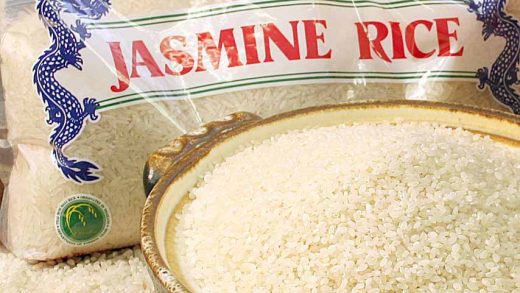I have always maintained that any well-stocked kitchen should have at least three kinds of salt, three kinds of oil and three kinds of vinegar. That’s nine items right there and doesn’t include can goods, spices and other basic ingredients that I think every kitchen needs.
Salt
This is a basic for nearly all cooking. Now I know we’ve talked about people eating too much salt. But nearly all of that extra salt comes from processed, prepared or convenience foods. If you’re starting from scratch, you have to have just a little salt or the food will taste bland. If it tastes bland you won’t eat it. Then you’ll reach for the bad food because it tastes good and you’re hungry.
Even if your doctor has told you to cut out the salt, you still need just a little for your body to function properly. What doctors mean when they say that is cut out the EXTRA salt. Have you ever seen someone add salt to food without even tasting it? That’s a problem. It means their taste buds have been so overloaded with salt, possibly due to overexposure to bland, dull, overcooked food, that without that extra salt they don’t think it tastes good. But if you stay away from that extra salt for a week or two, things with lots of salt in them will seem too salty to you.
What Kind Of Salt?
The question now is: what kind of salt? As I mentioned earlier, I think you need three kinds of salt. But I understand that’s not something you might be able to do at this point. So, if I had to choose just one kind in my kitchen, it would be kosher salt. Why? It has to do with shape. Kosher salt is flaked. The flat shape helps it to stick to food, which is why it’s used in Koshering, preparing meat for human consumption under the Jewish dietary laws. The law says meat must be free of impurities, which are in the blood and other fluids. The salt helps pull those fluids out of the meat. Kosher salt is the cooks’ and chefs’ choice because its shape makes it easier to control and it sticks to the food. Regular table salt, seen under a magnifying glass, looks like a rounded ice cube. That means it rolls off the food and is less precise.
You might have to invest in a salt cellar or some other open container for kosher salt because most salt shakers don’t have big enough holes to let the flakes through. Besides, using your fingers to pick up and sprinkle the salt works better and is less likely to over-salt. When salting food, always taste it before serving.
Other Kinds Of Salt
Another good salt choice is finely ground sea salt. This is a slightly stronger-tasting salt that’s rich in minerals because it is made from evaporated seawater. The fine grind means it dissolves well in liquids. You can usually use a little less sea salt in cooking than you would other kinds of salt.
Other useful salts are popcorn and rock varieties. I like popcorn, so my choice for my third salt is powdery popcorn salt. Just a pinch in my oil in the pot is enough for a big mixing bowl of the stuff. Rock-style salts, and I’m not talking about the stuff you put on your sidewalk in the winter, are used mostly for cocktails and garnishing. They also are used in meat crusts and rubs because they add a crunchy quality to the outside of the food without making it too salty.
There are many varieties of salt, but they are all basically the same. Some people say they can taste the difference between different types of salt from different parts of the world. But it’s a very subtle difference. Some salts have colors resulting from the other minerals dissolved in them, like Himalayan Pink salt.



